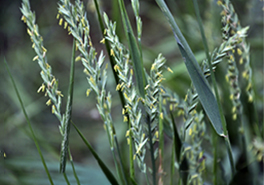
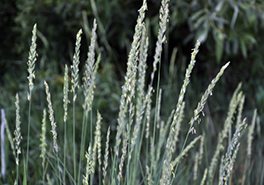
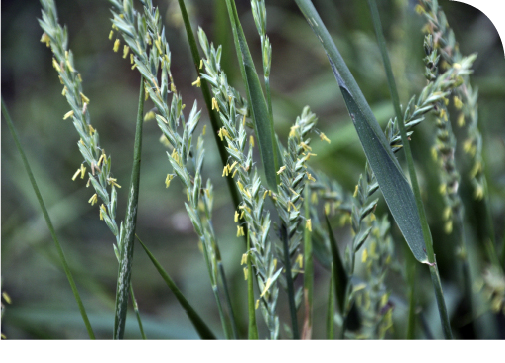
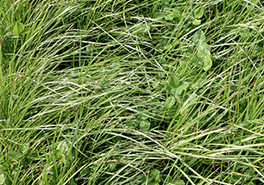
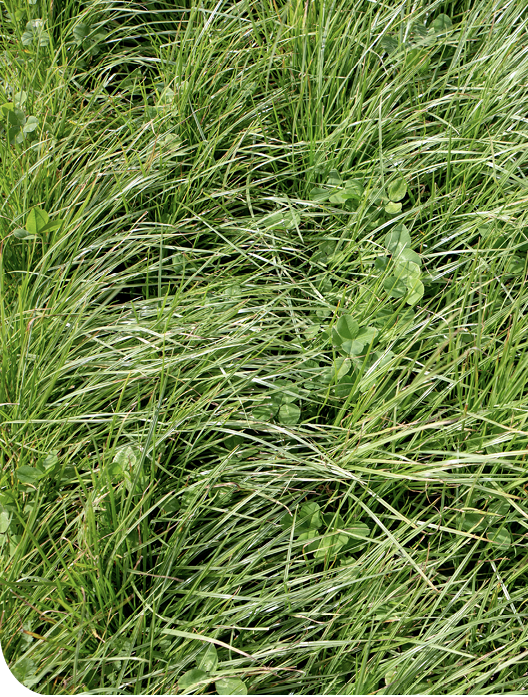
GRASSES
GENUS/SPECIES
Lolium perenne
FAMILY
Poaceae
SYNONYMS
Common: English Ryegrass, Winter Ryegrass, Ray Grass
DISTRIBUTION
Found in all 50 United States
Human Product Number - T24
Veterinary Product Number - 24
Comments
Perennial Ryegrass is a tufted, bunching, hairless grass that grows from 1-2 feet tall. There are numerous long, narrow, stiff leaves near the base of the plant. The leaves have parallel veins on the upper surface and a smooth, glossy undersurface. The flower forms in the spikelets on alternating sides of the stem. Each spikelet has a single glume on the side away from the stem with between 4 and 14 florets without awns. The anthers are pale yellow, and it flowers from May to November.


 Download & print
Download & print